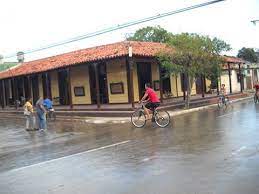Alden Hernández Díaz/June 6, 2023
The start of the wet season in the province of Ciego de Ávila has been very beneficial, if we take into account that, at the end of last May, the rains behaved above their historical average, which helps to alleviate the effects of the drought that accumulated from previous months.
In this first month of the rainy season in Ciego de Avila, rainfall ended with 198.9 millimeters (mm), equivalent to 120.3 percent of the historical sheet, according to the statistics of the rain gauge network of the Provincial Meteorological Center and the National Institute of Hydraulic Resources in the territory.
The “excesses” of downpours accumulated during April and May put the province in a somewhat more favorable situation, since they have registered a total of 337.8 mm so far this year, which represents 101.6 per cent. percent of the historical average for the period, although this has not yet been reflected in a tangible benefit for surface sources.
So much so, that until the date of this closure, the six artificial reservoirs from Ciego de Avila, as a whole, stored 32,462 cubic hectometres (hm³), for barely 21.8 percent of their capacity. The Liberación de Florencia hydrogroup, made up of the Cañada Blanca and Chambas II dams, registered, at the end of May, exactly one third of the total 79,830 hm³ that it can accumulate.
For its part, the Puente Largo reservoir, whose functions include being a hydraulic stopper for various hydrogeological sectors of the northern Ciego de Avila underground basin, continues to be totally dry.
On the other hand, the La Leche and La Redonda natural lagoons are in better condition, retaining 55.76 percent of the resource, although their waters do not provide a liquid balance to sectors of the economy and society due to their salinity levels.
It would remain to wait to appreciate the impact of rainfall with runoff and seepage into aquifers, which are the largest source of natural water resources in the province, once specialists make these measurements.

